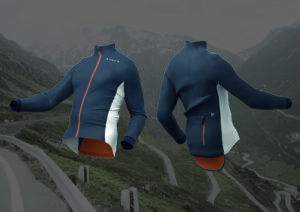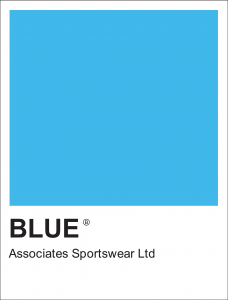The world’s accelerating journey towards producing the most sustainable sportswear possible is powered by compelling and undeniable arguments. The fast fashion industry, of which sportswear is a hugely significant part, comes with massive environmental costs. At stake for sportswear producers around the world is the current and future protection of “that big blue ball” – Planet Earth.
Take a look at a few of the published statistics and the scale of the environmental challenge in terms of carbon emissions, pollution and water usage is evident. The fashion industry has a global value annually of 2.5 trillion US dollars employing over 75 million people. Clothing production more than doubled between 2000 and 2014 with 60 per cent more garments, but many of the clothes are kept half as long and end up in landfill. Washing clothes sends 500,000 tons of microplastics into the ocean each year – equivalent to 50 billion plastic bottles. Around 93 billion cubic metres of water is used annually by the fashion industry. One per cent of the world’s crude oil production is needed to make synthetic fibres.

Black Friday advertisement (Friday 25th November 2011) that addresses the issues of consumerism. Patagonia is a world leader in sustainability and approaches sustainability in three areas: activism, donations, and their products.
From sportswear start-up companies to the global manufacturing powerhouses creating sustainable sportswear is not so much an option, it is now a must. With climate change and the war on single-use plastic high on the international environmental agenda, everyone is looking to be more eco-friendly and some corporate policies include setting a timescale on a move to making their companies “zero carbon” and “zero waste”. Recent years have seen the growing emergence of the “Holy Grail” of recycling – Circular Design. This involves using waste materials to make new products which are then fully recyclable and can be reused over and over – closing the circle. Proponents of the mission for Circularity believe it is a real step towards a sustainable future.
Creating sustainable sportswear is not only vital from a corporate image, public relations and moral viewpoint, but it is increasingly becoming a commercial necessity. Consumers are more and more environmentally aware, and give their verdicts with their purchasing actions. Sustainability is a sales pitch just as important as quality – and for many potential customers a key factor on their buying decisions.
One of the main ways Blue Associates can support clients in creating sustainable sportswear and an eco-friendly brand is by sourcing fabrics which meet this green criteria and flagging them up as an option. Synthetic fibres, such as recycled polyesters or Nylon, are sustainable whilst also providing quality and high performance as well as value-for-money. Using recycled materials is a big step forward in a manufacturer’s quest to reduce its carbon footprint.
An alternative to synthetic fabrics are natural fibres which can also be eco-friendly. A good example is sustainable and biodegradable bamboo fabric which is soft against the skin, breathable and quick drying. Other benefits which make bamboo fabric ideal for activewear include being wicking and having antimicrobial qualities, combating moisture and odour. As a natural cellulose fibre, bamboo fabric can be 100 per cent biodegraded in soil by micro-organisms and sunlight. The decomposition process does not cause any pollution in the environment.
Another natural fabric generally considered sustainable and which would be very suitable for some garments is Merino wool. It is made with Merino sheep’s thick fleeces, is a renewable resource and can be washed sparsely, saving water and energy. At the end of its life, pure Merino wool is fully biodegradable.
At Blue Associates we extend our sustainability guidance to providing options for eco-friendly and economical packaging as an alternative to conventional standard polybags (polystyrene and plastic). One example of this is corn starch packaging. Corn starch is biodegradable, compostable and carbon neutral, so does not generate waste or high carbon emissions. The “green” packaging also further promotes the business’s sustainability image which can have a positive impact on its overall sales.
Another factor in achieving sustainability through design is creating apparel which is durable and has a good “wear-life”. At Blue Associates we do this by sourcing high-performance fabrics which are right for a particular product and designing the garments for practical, robust sporting endeavour as well as style.
Besides the environmental impacts on the planet which present global challenges to our industry, international organisations and governments also focus on the human cost of fast fashion. Textile workers, primarily women in developing countries, are often paid derisory wages and forced to work long hours in appalling conditions, which, in many cases, are an infringement on human rights. Addressing this serious issue is also part of achieving sustainability. Blue Associates’ clients can rest assured that the factories it works with in Europe and the Far East are ethically run with the highest employment standards.
Looking to the future of eco-friendly sportswear production, undoubtedly new technologies will have a fundamental role to play in a pathway to complete sustainability. Recycling to produce textiles and fabrics is expected to make major advances in the not-too-distant future. All of which will see an industry which is kinder to the planet delivering many benefits to manufacturers and consumers alike.
Camille Rose Smith,
3D Sportswear Designer/Developer,
Blue Associates Sportswear.




